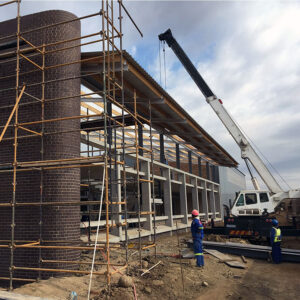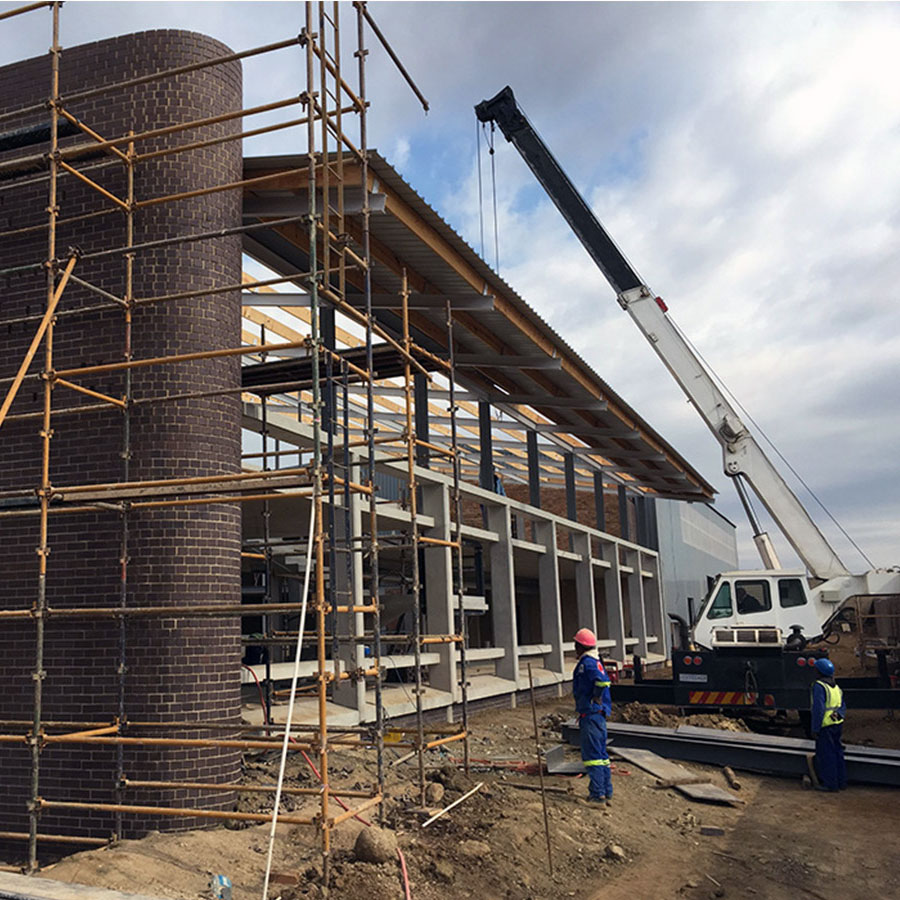If you’re planning on building an industrial facility, many factors must be considered. Understanding how these projects work, from site selection to government regulations, is important.
Unlike general commercial construction, industrial projects follow specific guidelines that account for environmental impact. This is particularly important for projects that may produce hazardous materials. Click https://www.taskforcelabor.com/ to learn more.

Industrial construction projects involve a wide range of materials. Some of these are natural, and others are artificial. They include wood, cement, steel, concrete, and metals. They can also contain other elements, such as bricks and sand. These materials are used to construct buildings, bridges, and other structures. The market for construction materials is growing rapidly, especially in developing regions. A high demand for residential apartments, infrastructure investments, and increased highway construction drives it. Moreover, the increasing population in these regions is expected to fuel the growth of the construction materials industry.
The construction industry is one of the largest consumers of natural resources and emitters of greenhouse gases. However, there are opportunities to reduce this impact by using more sustainable materials. For example, by replacing wood with a material made from cellulose and recycled paper, the industry can cut its use of natural resources and significantly reduce its environmental footprint.
Another way to make a construction project more sustainable is to use modular building methods, which use prefabricated components that are then assembled on-site. These methods are more efficient than traditional building methods and can save time and money. They also have the added benefit of being safer for workers.
Many firms are experimenting with new materials that can be recycled or reused. For example, one company uses a durable, lightweight material to build walls and other interior features of commercial buildings. This is an alternative to the more common, expensive materials such as glass, stone, and concrete. Richlite is manufactured from recycled paper and is far more environmentally friendly than other common construction materials.
Industrial buildings are large facilities that house capital-intensive equipment and machinery for production processes. They can be found in various industries, including oil and mining. Typical features of industrial buildings include warehouses and parking lots to accommodate semitrailers. These buildings often require a three-phase power supply to run the heavy machinery.
The construction industry is home to the world’s most creative minds. But these skills could be better spent too often on procurement problems and logistical hurdles. By bringing standardization to the design, manufacturing, and shipping of construction components, industrialized construction can free these minds to create innovative, high-performance structures that improve lives, buildings, and the environment.
Industrial construction is an endeavor that requires a lot of logistics to coordinate production and distribution. It also involves the creation of structures that are used to store raw materials and finished products for transporting. Industrial buildings are usually located on the outskirts of town, away from residential areas. They are also larger and designed to accommodate heavy machinery that may need more space.
Industrial buildings differ from commercial construction because they focus on logistics instead of foot traffic. They are also designed to have more oversized doors and spacious corridors that accommodate large trucks coming in and out of the building with raw materials or finished goods. The design of an industrial project should consider the workflow and how people will always move through the building.
Another key difference between industrial and commercial construction is that industrial projects are often subject to more stringent government regulations. These include site selection, environmental impact, and zoning issues. To ensure that the specialized requirements of an industrial construction project are met, it is critical to work with contractors who have experience working in this industry.
A good way to streamline the entire industrial construction process is to work with a general contractor who can handle planning, design, and building. This will save time, money, and the headache of dealing with separate firms. This is also an advantage because it reduces the chance of conflicts when independent entities handle a construction job.
A design-build contractor will handle every aspect of the construction project, from the initial plans to final inspections. This type of contractor will save you time and money by streamlining the construction process, allowing you to get your building up and running faster. They also provide a single point of contact for all services, ensuring that your project is on schedule and within budget. This method of project delivery is ideal for businesses that are time-sensitive. It is also an effective solution for companies that need to save on construction costs while maintaining high quality.
The government sets the regulatory framework in which industrial construction projects operate. This includes many national, state, and local laws governing workplace safety and land use. As such, there’s a lot to keep track of, especially since changes in presidential administrations can create uncertainty about whether regulations will be rolled back or imposed.
The Occupational Safety and Health Administration (OSHA) has rules governing workplace safety and handling hazardous materials. Some of these requirements are common across all industries, while others are specific to the industrial sector. For example, the agency’s construction standards require workers to wear protective headwear. The agency also requires that companies provide a designated area for the disposal of hazardous waste and other materials.
In the past, OSHA used to name and shame firms that didn’t meet safety standards, but the agency has recently changed its approach. It now focuses on educating and helping companies comply rather than prosecuting them. Still, companies that fail to meet OSHA’s rules face fines and other penalties.
Construction managers must be aware of the latest industry rules to avoid hefty fines and other penalties. They can find helpful information online and consult with industry professionals for advice.
There are also international standards that can help businesses meet regulatory requirements. For instance, ISO 27001 is a globally recognized standard that supports secure collaboration and protects data from cyber breaches. This is vital for the construction industry, which handles large amounts of sensitive information. Achieving ISO certification promotes best practices and enhances reputation.
Other industry standards, such as ISO 22301, are designed to help businesses plan for business interruptions. This is important for construction companies, which rely on complex supply chains and have tight deadlines to meet. Implementing this standard enables organizations to mitigate risk, minimize downtime, and ensure profitability.
Another industry regulation to consider is the Davis-Bacon Act, which requires contractors to pay prevailing wages on federally funded construction projects. Proponents say this rule levels the playing field during the bidding process and prevents contractors from lowering wages to win jobs. Critics say the benchmark wages the law sets don’t accurately reflect regional pay rates and can exclude small construction firms from competing for federal projects.
Many safety measures must be taken during industrial construction. These include safety training, regular equipment inspections, and clear communication on site. These safety measures are essential for the success of a project. They also help to reduce indirect costs such as surety bond claims and insurance rate hikes.
The first step in safety is to make sure that all workers are trained on the specific machinery they will be using. This includes knowing how to operate the machine and understanding its hazards. In addition, all employees should have personal protective equipment. This will protect them from electrical, mechanical, physical, and chemical threats.
Restricting access to the construction area during work hours is also important. This is not only to keep people from entering a dangerous place, but it can also protect equipment from damage or theft. Strict security protocols will also prevent contractors from being accused of negligence or malpractice in case of a security breach or safety incident.
Workers must be aware of common safety risks on construction sites, such as falls, caught-in or between hazards, struck-by hazards, and electrocution hazards. Contractors and safety professionals must ensure that all workers know these risks and how to avoid them. Regular meetings should be held to discuss safety issues and address any problems.
While some construction workers may consider site safety measures to be a nuisance, these measures are essential for the safety of everyone on the job site. Without them, workers could be injured or even killed. If workers are injured on the job site, they should seek immediate medical attention.
The construction industry is unique in many ways, including its high rates of injuries and fatalities. There are several reasons for these high rates, including: low bid processes; the need to meet deadlines; environmental conditions due to outdoor working situations; and multiemployer worksites. However, safety issues in the construction industry can be overcome with proper planning and implementation of a safety management system. This includes identifying all safety procedures on the job site and making them easily identifiable with clear signage.
